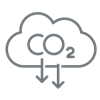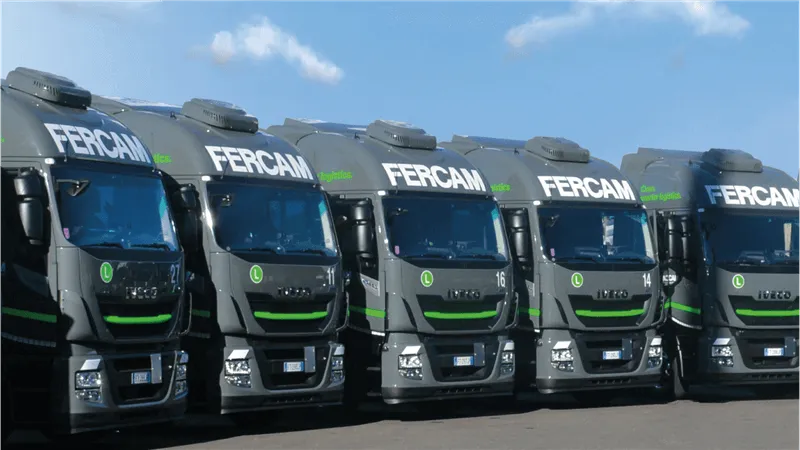Emission Free Transport
Alternative traction vehicles for medium and long-haul transport: a gradual phasing out of fossil fuels in favour of biofuels
FERCAM pays continuous attention to the management of its fleet, aiming at maintaining vehicles in line with the highest industry standards. In recent years we have made important investments for the introduction of new sustainable fuels such as BioLNG (Liquefied Natural Gas of organic origin) and HVO. Equally important is the intermodal transport service that significantly contributes to the reduction of harmful emissions.
HVO FUEL - Hydrotreated Vegetable Oil
FERCAM drives innovation towards more eco - friendly transportation
FERCAM is at the forefront of sustainable transport solutions through the use of vehicles powered by HVO, a renewable biofuel compatible with traditional Diesel engines. HVO is produced from waste vegetable oils, such as straw, algae, organic waste, agricultural residues, used cooking oil (no palm oil), ensuring reduced environmental impact and a no contrast with the food supply chain. Since December 2021, FERCAM has been testing this innovative biofuel in its vehicles in South Tyrol, used for services to hospitals in the Province of Bolzano and in daily transports between Bolzano and Munich. As of April 2023, all company-owned Diesel vehicles are powered by HVO biofuel. This initiative marks another step forward in FERCAM's journey toward increasingly sustainable and responsible transportation.
The benefits of HVO hydrogenated biofuel

of organic origin, and free of aromatics, polyaromatics and palm oil

made from waste from food and forestry residues

along the entire "Well to Wheel" chain compared to traditional fossil fuel

minimizing raw material consumption, and does not require dedicated food crops
eActros 300 City Tractor
FERCAM continues to invest in innovative technologies to reduce CO2 emissions, strengthening its commitment to increasingly sustainable logistics.
A concrete example of this is the introduction of the eActros 300 City Tractor, a fully electric road tractor designed for short- and medium-haul transport. Equipped with three battery packs with a total capacity of 336 kWh, it offers a range of up to 220 km, making it an ideal solution for zero-emission operations in urban environments.
With these vehicles and a targeted strategy to electrify its fleet, FERCAM is dedicated to driving the transition toward a more sustainable future in the logistics sector.
BioLNG
BioLNG is a renewable fuel produced through the liquefaction of a renewable gas: biomethane. In 2020 FERCAM, together with other South Tyrolean companies, signed an agreement with Biogas Wipptal for the production of BioLNG. In fact, the company aims at using the manure produced by livestock farming for the production of biomethane. The biofuel thus produced generates significantly lower greenhouse gas emissions.
The advantages of BioLNG
Vehicles with engines powered by liquid natural gas require a higher initial economic commitment, but offer important advantages for environmental protection:
- 99% reduction in particulate matter
- NOx reduction by 60%
- Reduction of vehicle noise compared to the threshold values of Euro V vehicles
- Up to -80% of emitted CO2

Intermodal transport
An eco-sustainable and efficient solution
FERCAM also transports annually around 24,000 load units with the combined rail/road system, with benefits in terms of fewer vehicles circulating on the roads, reduction of the consumption of energy resources and of CO2 emissions: the intermodal transport system allows on average a 55% reduction in CO2 emissions compared to road transport. In 2023 FERCAM carried out over 23,000 intermodal transports: emissions of over 39,000 tons of CO2 were avoided.




























